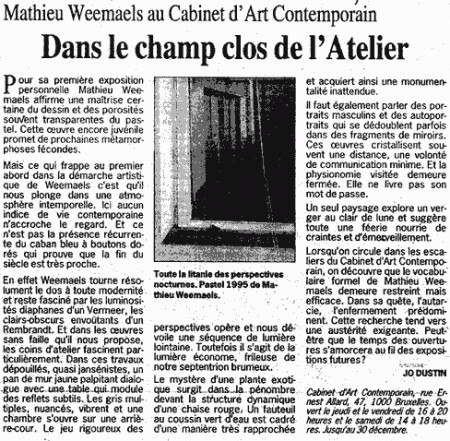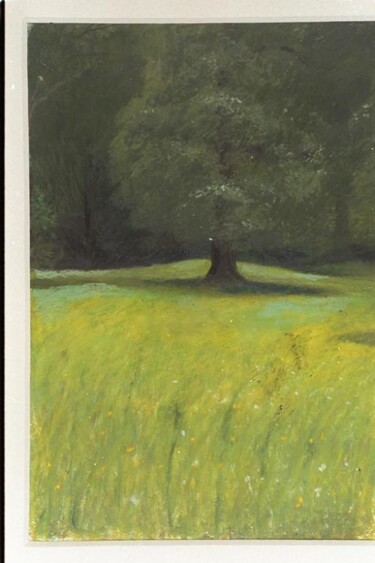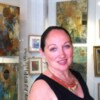Added Sep 6, 2006
I was born in 1967, in Brussels, Belgium, into a family of artists. My mother, Jacqueline Rosenfeld, is a violinist (with a symphony or chamber music group, if so), and my father, Jacques Weemaels, an architect and painter . My brothers are musicians.
Since I was a kid, I’ve always been drawing. I remember thinking when I was 8 years old, a boy in school, that drawing would become important to me. I’ve never stopped drawing since that period. At the beginning, I wanted to draw cartoons.
But at the age of 20, my vision of what I wanted to do changed, dramatically. I began art studies in La Cambre in Brussels, studying drawing. That’s when I discovered the technique of dry pastels, and the force you can put in them. It is a far cry from the sweetness that is often attributed to that medium!
That’s also where I learned how to make pastels by myself. I still do that today.
For painting landscapes, I began working with oil pastels, outside. But after a few years, I wanted to make bigger sizes, and so I work in my studio, sometimes with the help of photos.
MS:You mention oil pastels. Do you still use oil pastels, or entirely dry pastels? Or both? If both, do you ever use them on the same painting? If you do, in what sequence?
The hours of observation that I’ve spent outside, in nature, help me to interpret the photos that I now use occasionally for landscapes executed in the studio. But that’s the only case where I sometimes use photos. In order to use photos effectively, I believe it requires extensive experience painting from nature or life. That allows me to “read” the photos, or to supply what the photos do not.
For the nudes, I always draw them with a model.
In the case of my still-lifes, I always draw them from reality, organizing things in my studio, exactly as you guessed. I prefer calling them: “coins d’atelier” in French.
MS: About your objective. Apart from subject matter, what pictorial elements motivate you most?
MW: My objective is a simple pleasure: sharing with the others the beauty of the very simple objects of my studio. But the real subjects are silence, quietness, calm, the contemplation possible in solitude. I love the North light. It is soft, cold, the light of my country, in fact, that supplies something very quiet, and sweet with a trace of sadness, to these scenes.
So, I assemble these objects, one with the others, following my inspirations, and when something touches me, gives me an emotion, then I begin the drawing.
These objects are nothing special, just ordinary things that are in my studio, or things that I have put in it simply because I like them: my old coat, Chinese cups, dried flowers and old mirrors. I very often use mirrors in my compositions, they are like a window to somewhere else.
MS: So the use of the mirror provides a visual tension, a dichotomy?
“Yes. I’ve always loved the reflected world. The images in the mirror seem to be another reality, a world more beautiful and strange than the real one. I like the contrast between these two worlds.”
MS: Your still-lifes or interiors reveal a deep understanding of composition. How and when did composition (or design) become such an important facet of your work? What abstract elements have the greatest draw for you?
MW: Composition is always based on my instinct, emotion. It is intuitive, not methodical. It’s a very important thing, the composition. It must be dynamic, original, with strong decisions. I love compositions with partly represented things, that is what I prefer, as being more original than just the object in the center of the drawing. (By this do you mean partially represented objects, or objects distorted in shape, what?)
MS: Which historic master artists do you admire, who perhaps have been a source of inspiration to you?
MW: My favorite artists are more often figurative, but not always.
For the ancients, I’m a fan of Rembrandt, his wonderful darkness, I especially love his self-portraits, so modern for the 17th century. I also love Vermeer of course, and so many others: Caravaggio, Velasquez, Goya, Chardin…
The moderns: I would include Francis Bacon, Lucian Freud, Hopper, Rothko, Spilliaert (Belgian painter), Bonnard, Vuillard…
But the inspiration of my work with ordinary, day-to-day objects is certainly the Spanish painter of this century: Antonio Lopez Garcia. I remember having been impressed by the fact that he made paintings which subjects were old fridges, or even a dirty toilet. I like artists who push the envelope, as you say.
MS: Does the camera play a role in creating his work, or is it all painted from life? To what extent does imagination play a role?
MW: All my work is painted from life, even the nudes, the only exception are the landscapes.
I think that I could have an advantage with photos, in the possibilities of new points of view, but I fear I would loose something in emotion, and color subtleties.
MS: How would you describe the creative process involved in your work? You distort, elongate, push and pull? Is that intuitive - on the spur of the moment - or planned in advance?
You’re speaking of my distorted self-portraits. The idea came looking at me in the casseroles when I was eating. I loved the distorted reflections due to the form of the casseroles, I was fascinated by the new strange forms that I could see in them, so I decided to represent them. It gives an expressionist impression to these drawings, something that could be a bit close to Bacon’s work, that’s what people sometimes tell me with that work.
MS: What supports/surfaces do you use? What brands of pastels do you prefer? How about scale – how large do you work?
I work on paper, but I don’t use the paper for pastellists , because I hate the asperities in it, so I use two kinds of papers: some Fabriano , an Italian paper, for the formats until 50x70cm.
For bigger ones, I use another paper, more sweet ,a bit like cotton. It must catch the powder, but I like it when it resists a bit, when it’s not too sweet. Because as I said, I don’t like too much sweetness in my work, I prefer something a bit acidic, a bit edgy. I always prepare my own pastels from pigments. They are sweet enough, and leave a lot of pigment on the paper.
MS: Has he tried Wallis paper .
MS: How would you describe your technique? Would you start by developing the darks and progressing to the lights, or is there some other method you generally follow?
Everything is intuitive. But I could say that I begin with big shapes or masses, and approximate colors. Then I gradually become more precise, more expressive, all through the painting process.
I begin a drawing like someone who is very hungry, who suddenly discovered a very good dinner on his table: he would not begin with, the bread, and after the vegetables… he would put everything in his mouth all at once!!! That’s what I do: I jump into the drawing, going at it vigorously, with no particular technique. It’s a rapid and nervous process. After that first attack, I give some rest to my drawing, and to my eye and brain, too, and I look at it one or two days after. That’s when the poetic work begins, I think. I shift gears and become more sensitive, more thoughtful.
MS: How do you determine when you are finished with a particular work?
MW: Once again, it’s a question of intuition. It is finished when it says something that words could not say. The painting must say something that interests me, give me an emotion, something more than anything that I could imagine doing it, something poetic.
MS: Are there techniques that you have personally developed, unusual methods of working that you have developed that are all your own, or that you have adapted to your work from others? Do you underpaint in watercolor or acrylic, etc.?
-No, I’m very classic in my technique, I never mix them: dry pastel is dry pastel from the beginning to the end.
MS: The term “soft” pastel has crept into usage in the United States, to distinguish the medium from oil pastel. But you repeatedly refer to the medium as “dry pastel”. I like that term much better than “soft” which seems to indicate a medium that is feminine or unassertive. Is “dry pastel” the term generally used in Belgium and France.
MS: How would you describe your work in terms of mood, or concept? What are you seeking to achieve in terms of expression? I sense a dark, even menacing quality in many of the pieces. Is there a “statement” you are making?
MW: I don’t think of a special concept for my work, it’s just something very personal, a research and a pleasure. I love drawing. I follow the images I see in my head, trying to materialize them; it’s something quite obsessive, within me. I realize that more all the time as I draw, as more of these images come to me. So it is not a statement, just an expression of my response to these images.
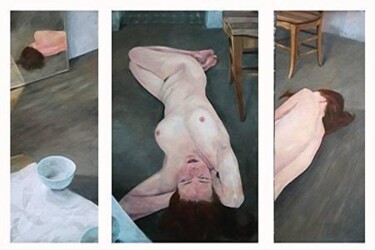
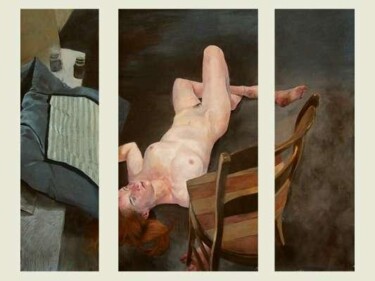





































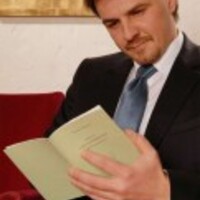 GALERIE HEINE STRASBOURG
GALERIE HEINE STRASBOURG

